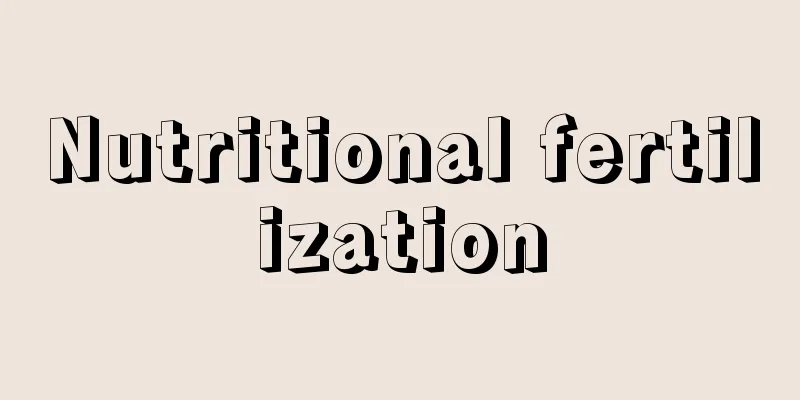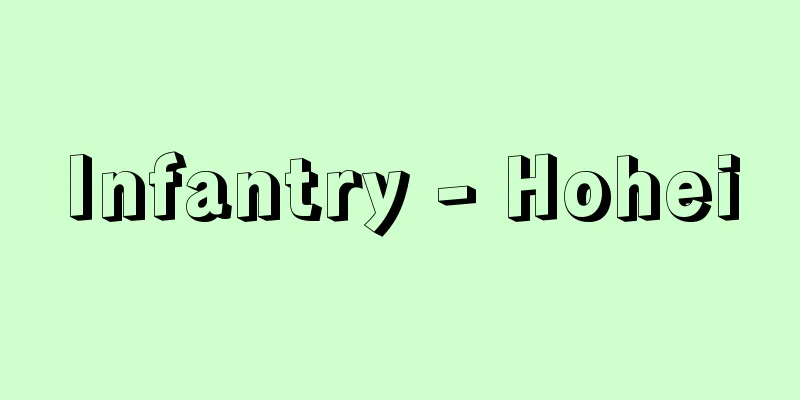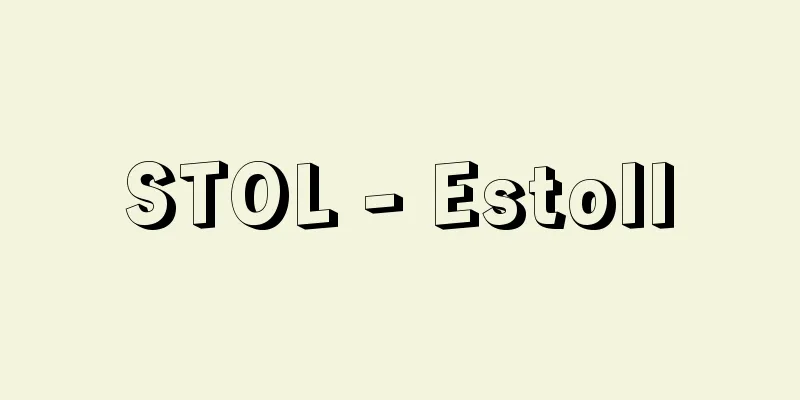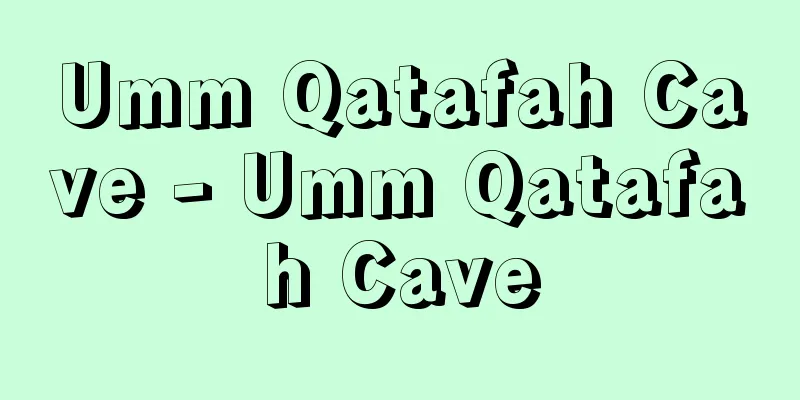Juvenile Law - Shounenho

|
A law that provides for special dispositions and procedures for delinquent juveniles. HistoryThe idea of systematically treating juveniles (regardless of gender) differently from adults has been around for a long time, but especially in the 19th century, the punitive approach moved away from the previous approach and toward protectionism. It is said that the foundation of this protectionism was the idea of "parens patriae" (parents of the homeland) derived from equity (the common law system). In other words, the state is ultimately the "parent" in its relationship with juveniles, and the state has the responsibility to provide protection in place of parents and other guardians to juveniles who need support (juveniles in need of support), juveniles who are neglected because their parents or other guardians do not fulfill their responsibilities (neglected juveniles), and juveniles who have committed delinquent acts and need protection (delinquent juveniles). The Chicago Juvenile Court Act, which was established in 1899 based on this idea, is considered to be epoch-making in that it institutionally realized the shift from punitiveness to protectionism. From the end of the 19th century to the beginning of the 20th century, the movement to enact juvenile laws became active in various countries around the world. In Japan, private religious leaders had been practicing educational and protective activities for delinquent juveniles since the 1870s (around 1877-1886), but in 1900 (Meiji 33), the Reformatory Law was enacted, which triggered legal arrangements. However, since the establishment of reformatories was left to the discretion of each prefecture, there were few results, and it remained a punitive system that utilized the penal institution system under the old Penal Code enacted in 1880 (Meiji 13). When the current Penal Code was enacted in 1907, the penal institution system was abolished, and the accompanying amendment to the Reformatory Law led to the establishment of reformatories in each prefecture across the country, and furthermore, in 1922 (Taisho 11), the Juvenile Law and the Correctional Institution Law were enacted. However, at that time, punitiveness still took precedence over protectionism, and from the beginning, only the part related to criminal punishment was implemented nationwide. The protective measures were only implemented in three prefectures and two prefectures - Tokyo, Kanagawa, Osaka, Kyoto, and Hyogo - and juvenile courts were only established in two locations, Tokyo and Osaka. It was not until 1942 (Showa 17) that the system was implemented nationwide. [Shuichi Susuki and Akikazu Konishi September 15, 2015] Juvenile justice after World War IIAfter the Second World War, under the influence of the United States, the Juvenile Law (Law No. 168 of 1948) was completely revised in 1948 (Showa 23). This Juvenile Law stipulated three types of cases: juvenile protection cases, criminal cases by adults that harm the welfare of juveniles, and criminal cases by juveniles, with the aim of promoting the healthy development of juveniles. The new law differs from the old one in that, first, it is thorough in its protectionism, second, it adopts a scientific approach, and third, it takes into consideration the protection of juvenile human rights. The old law set the age of a juvenile under 18 years old, but the new law raised this to under 20 years old, and revised the system of prosecutors' first referral for juveniles who have committed crimes, giving the family court the first referral right. In principle, measures under the Child Welfare Law are taken against juveniles under 14 years old. While the previous law did contain the intention to adopt a scientific approach, the current law places importance on this premise and ensures that from the early stages of the process, behavioral science experts, such as family court investigators, probation officers, and juvenile classification center legal technicians, consistently play important roles in procedural decisions and the selection and determination of protective measures. Furthermore, the new law transferred the authority to decide on protective measures from the juvenile courts, which are administrative bodies, to the family courts, which are judicial bodies, and distinguished between the adjudication stage and the execution stage. It also introduced a warrant system for summonses and accompaniment, and applied the provisions of the Code of Criminal Procedure to witness examination, appraisal, seizure, search, etc., as long as they are not contrary to the nature of the protective case. It also established a system of appeals against decisions on protective measures. These were made in consideration of the fact that protective measures, no matter how protective, are disadvantageous measures for the juvenile himself. Another revision was the streamlining of protective measures into three types: probation, referral to reformatory/foster care facility (renamed child independence support facility/child welfare facility in April 1998, following the amendment of the Child Welfare Law in June 1997), and referral to a juvenile prison. Various changes have been made to criminal punishments, but the adoption of leniency and indefinite sentences and the establishment of an early parole system are similar to the old law. Because the entire process of juvenile trials is understood to be a process of protection, they are kept informal and confidential, and "trials shall be conducted in a friendly and considerate manner, and shall encourage delinquent juveniles to reflect on their own misconduct" (Article 22, Paragraph 1 of the Juvenile Justice Act). [Shuichi Susuki and Akikazu Konishi September 15, 2015] Trends in Juvenile Law Reform The Ministry of Justice announced the "Concept for Amending the Current Juvenile Law" in May 1966, and then announced the "Outline of Juvenile Law Amendments" in June 1970, and consulted with the Legislative Council, which received an "Interim Report" in November 1976. The contents of the proposal included providing special treatment in juvenile trial procedures for cases involving juveniles aged 18 and over that differed to some extent from cases involving juveniles under the age of 18, introducing a system of publicly appointed and mandatory attendants to juvenile trials, and diversifying protective measures, but there was strong opposition to this from all walks of life, and no final proposal for amending the law was reached. However, in the 1990s, there was an increase in reports of the frequent occurrence of violent juvenile crimes, and as flaws in juvenile trial procedures, such as the difficulty of determining facts in complex cases, became apparent, momentum for revision of the Juvenile Law grew, and as a result, in July 1998, the Minister of Justice consulted the Legislative Council on partial revision of the Juvenile Law, which decided on the "Outline of Juvenile Law Revision" in December of the same year, and in January of the following year, 1999, a report was submitted entitled "Outline of the outline for the development of the Juvenile Law to further improve the fairness of fact-finding procedures in juvenile trials", and in November 2000, a revised Juvenile Law was enacted through a parliamentary bill (which came into effect in April 2001). The contents of the bill are as follows: [Shuichi Susuki and Akikazu Konishi September 15, 2015] Danto Shigemitsu, Murai Toshikuni, Saito Toyoji, Wait a Moment: The "Revision" of the Juvenile Law (1999, Nippon Hyoronsha) ▽ Sawanobori Toshio, Juvenile Law: From Basic Principles to Revision Issues (1999, Chuokoron-Shinsha) ▽ Danto Shigemitsu, Murai Toshikuni, Saito Toyoji, et al., Criticizing the "Revision" of the Juvenile Law (2000, Nippon Hyoronsha) ▽ Inose Shinichiro, Morita Akira, Saeki Hitoshi (eds.), New Developments in Juvenile Law: Theory, Procedure, Treatment (2001, Yuhikaku) ▽ Kai Yukio, Irie Takeshi, Iijima Yasushi, Kato Toshiharu, Q&A: The Revised Juvenile Law (2001, Yuhikaku) ▽ Danto Shigemitsu et al., OD Edition: New Edition of the Juvenile Law, 2nd Edition (2001, Yuhikaku) ▽ Tamiya Yutaka (ed.), OD Edition: Juvenile Law Commentary on the Provisions (2001, Yuhikaku) ▽ Hiraba Yasuji, OD Edition Juvenile Law New Edition (2001, Yuhikaku) ▽ Kazuno Hiroyuki, Reconstructing Juvenile Justice (2003, Nippon Hyoronsha) ▽ Saito Toyoji and Moriya Katsuhiko, eds., Issues and Prospects of Juvenile Law 1 and 2 (2005, 2006, Seibundo) ▽ Kazuno Hiroyuki, ed., Verification and Prospects of Juvenile Justice Reform (2006, Nippon Hyoronsha) ▽ Wakaho Toru, Issues in Juvenile Law Reform: What are the Issues in Judicial Welfare and Child Welfare? (2006, Gendaijinbunsha, Daigaku Tosho Publishing) ▽ Kazuno Hiroyuki, Participation and Restoration in Juvenile Justice (2009, Nippon Hyoronsha) ▽ Tamiya Yutaka and Hirose Kenji, eds., Annotated Juvenile Law, 3rd Edition (2009, Yuhikaku) ▽ "Moriyama Tadashi and Goto Hiroko (eds.), 2nd edition, revised version of "Beginners' Juvenile Law" (2009, Seibundou)" ▽ "Maruyama Masao, 2nd edition, "Lectures on Juvenile Law" (2012, Seibundou)" ▽ "Moriya Katsuhiko and Saito Toyoji, editors in chief, "Commentary on Juvenile Law" (2012, Gendaijinbunsha)" ▽ "Maruyama Masao, Bridge Book: Introduction to Juvenile Law" (2013, Shinzansha)" ▽ "Takeuchi Kenji, "The Structure of Protection in Juvenile Justice: Due Process, Guarantee of the Right to Growth and Development, and the Prospects for Juvenile Justice Reform" (2014, Nippon Hyoronsha)" ▽ "Honjo Takeshi, "Criminal Disciplinary Actions for Juveniles" (2014, Gendaijinbunsha)" ▽ "Takeuchi Kenji, "Lectures on Juvenile Law" (2015, Nippon Hyoronsha)" ▽ "Sawano Toshio, "Introduction to Juvenile Law" 6th edition (2015, Yuhikaku)" [References] | | | | | | | | | prison| | | | | |Source: Shogakukan Encyclopedia Nipponica About Encyclopedia Nipponica Information | Legend |
|
非行少年について特別の処分や手続を規定した法律。 沿革少年(性別は不問)に対しては成人と異なる方策を制度的に講ずるという考え方は、歴史的に古くから行われていたが、とくに19世紀に入ると、それ以前の刑罰主義を離れ、保護主義へと移っていく。この保護主義の礎(いしずえ)となったのは、衡平法(エクイティequity、英米法の法体系)に由来する「国親(祖国の親)」(パレンス・パトリエparens patriae)の思想であったといわれている。すなわち、国は少年に対する関係において究極的には「親」であり、扶助を要する少年(要扶助少年)、親その他の保護者たるべき者がその責任を果たさず放任されている少年(放任少年)、非行を行い保護の必要性がある少年(非行少年)に対しては、国が両親その他の保護者にかわって保護を与える責任があるという考え方である。これに基づいて1899年に誕生したシカゴ少年裁判所法は、刑罰主義から保護主義への転換を制度的に実現したものとして画期的な意義をもつものとされる。 19世紀の末ごろから20世紀の初期にかけて、世界各国に少年法制定の動きが活発になる。日本では、明治10年代(1877~1886年ごろ)から民間の宗教家が非行少年に対する教育保護事業を実践してきたが、1900年(明治33)には感化法が制定され法的整備のきっかけとなった。しかし、感化院の設置は各府県の任意にゆだねられたため、ほとんど実績はなく、1880年(明治13)制定の旧刑法による懲治場の制度を活用するという刑罰主義にとどまっていた。1907年の現行刑法になると懲治場(ちょうじじょう)の制度は廃止され、これに伴う感化法の改正により、全国各府県に感化院が設置されることになり、さらに、1922年(大正11)には少年法と矯正院法が制定された。ただし、当時はまだ保護主義よりも刑罰主義が優先され、最初から全国的に行われたのは刑事処分に関する部分だけであった。保護処分に関する部分は、東京・神奈川・大阪・京都・兵庫の3府2県に施行されたにとどまり、少年審判所も東京・大阪の2か所に設置されただけであって、これが全国的に行われるようになったのは1942年(昭和17)からである。 [須々木主一・小西暁和 2015年9月15日] 第二次世界大戦後の少年法第二次世界大戦後、アメリカの影響により、1948年(昭和23)少年法(昭和23年法律第168号)が全面的に改正された。この少年法は、少年の健全育成を目的として、少年の保護事件、少年の福祉を害する成人の刑事事件、少年の刑事事件の三者について規定していた。旧少年法に対するその特徴は、第一に保護主義の徹底、第二に科学主義の採用、第三に少年の人権保障への配慮である。旧法は少年の年齢を18歳未満としていたが、新法はこれを20歳未満に引き上げ、罪を犯した少年に対する検察官先議の制度を改めて、家庭裁判所にその先議権を与えた。14歳未満の少年に対しては原則として児童福祉法上の措置がとられる。科学主義の採用は、旧法にもその意図がみられなかったわけではないが、現行法は、このたてまえを重視し、手続の初期の段階から、家庭裁判所調査官、保護観察官、少年鑑別所法務技官など、行動科学の専門家が、一貫して、手続決定や保護処分選択・決定に重要な役割を果たすようにしている。 さらに、新法は、保護処分決定機関を、行政機関である少年審判所から司法機関である家庭裁判所に移し、審判の段階と執行の段階とを区別するとともに、呼出し・同行について令状主義を導入し、証人尋問、鑑定、押収、捜索等について保護事件の性質に反しない限り刑事訴訟法の規定を準用する。また、保護処分の決定に対し抗告の制度を新設した。これらは、いかに保護的とはいえ、保護処分が少年自身にとっては不利益な措置である点を配慮したものである。なお、保護処分の内容を保護観察、教護院・養護施設(1997年6月の児童福祉法改正に伴い、1998年4月よりそれぞれ児童自立支援施設・児童養護施設に改称された)送致、少年院送致の3種類に整理したのも改正点の一つである。刑事処分についても種々の変更がみられるが、寛刑主義・不定期刑主義をとり、早期仮釈放制度が設けられている点は旧法と類似している。 少年審判は全過程が保護の過程であると理解されているため、非形式主義・非公開主義がとられ、「審判は、懇切を旨として、和やかに行うとともに、非行のある少年に対し自己の非行について内省を促すものとしなければならない」(同法22条1項)とされる。 [須々木主一・小西暁和 2015年9月15日] 少年法改正の動向法務省は1966年(昭和41)5月「現行少年法改正に関する構想」を発表、その後、1970年6月「少年法改正要綱」を発表、法制審議会に諮問し、1976年11月には「中間報告」を得た。内容は、18歳以上の少年の事件については少年審判手続上で18歳未満の少年の事件とはある程度異なる特別の取扱いをする、少年審判に国選・必要的付添人の制度を導入する、保護処分を多様化する、などであるが、これには各界からの反対が強く、法律改正のための成案を得るに至らなかった。しかし、1990年代に至り、凶悪な少年事件が頻発しているとの報道が増加したことや、複雑な事件における事実認定の困難さなど少年審判手続上の不備が明らかになってきたことから、少年法改正の気運が高まり、その結果、1998年(平成10)7月、法務大臣から法制審議会に対する少年法の部分改正についての諮問、同年12月の「少年法改正要綱」の決定、翌1999年1月の「少年審判における事実認定手続の一層の適正化を図るための少年法の整備等に関する要綱骨子」の答申などを経て、2000年(平成12)11月には議員立法による改正少年法が成立した(2001年4月施行)。その内容は、 [須々木主一・小西暁和 2015年9月15日] 『団藤重光・村井敏邦・斉藤豊治著『ちょっと待って少年法「改正」』(1999・日本評論社)』▽『澤登俊雄著『少年法――基本理念から改正問題まで』(1999・中央公論新社)』▽『団藤重光・村井敏邦・斉藤豊治他著『「改正」少年法を批判する』(2000・日本評論社)』▽『猪瀬愼一郎・森田明・佐伯仁志編『少年法のあらたな展開――理論・手続・処遇』(2001・有斐閣)』▽『甲斐行夫・入江猛・飯島泰・加藤俊治著『Q&A 改正少年法』(2001・有斐閣)』▽『団藤重光他著『OD版 新版 少年法』第2版(2001・有斐閣)』▽『田宮裕編『OD版 少年法 条文解説』(2001・有斐閣)』▽『平場安治著『OD版 少年法 新版』(2001・有斐閣)』▽『葛野尋之著『少年司法の再構築』(2003・日本評論社)』▽『斉藤豊治・守屋克彦編著『少年法の課題と展望1・2』(2005、2006・成文堂)』▽『葛野尋之編『少年司法改革の検証と展望』(2006・日本評論社)』▽『若穂井透著『少年法改正の争点――司法福祉と児童福祉の課題は何か』(2006・現代人文社、大学図書発売)』▽『葛野尋之著『少年司法における参加と修復』(2009・日本評論社)』▽『田宮裕・廣瀬健二編『注釈少年法』第3版(2009・有斐閣)』▽『守山正・後藤弘子編著『ビギナーズ少年法』第2版補訂(2009・成文堂)』▽『丸山雅夫著『少年法講義』第2版(2012・成文堂)』▽『守屋克彦・斉藤豊治編集代表『コンメンタール少年法』(2012・現代人文社)』▽『丸山雅夫著『ブリッジブック少年法入門』(2013・信山社)』▽『武内謙治著『少年司法における保護の構造――適正手続・成長発達権保障と少年司法改革の展望』(2014・日本評論社)』▽『本庄武著『少年に対する刑事処分』(2014・現代人文社)』▽『武内謙治著『少年法講義』(2015・日本評論社)』▽『澤登俊雄著『少年法入門』第6版(2015・有斐閣)』 [参照項目] | | | | | | | | | | | | | | |出典 小学館 日本大百科全書(ニッポニカ)日本大百科全書(ニッポニカ)について 情報 | 凡例 |
>>: Child soldier - Shounenhei
Recommend
Reverse conversion circuit - gyakuhenkankairo
…(1) Inverse conversion circuit. This refers to a...
《O Cangaceiro》(English spelling) O Cangaceiro
...Originally a folk song, Luiz Gonzaga (1912- ),...
MI5 - MI Five
Military Intelligence 5 is the nickname for the Br...
Paulists - Paul is (English spelling) Paulicians
A dualistic heresy in the Byzantine Empire. Also k...
Gas burner
A device that efficiently burns fuel gas to produc...
Siberian Development - Siberian Development
Economic construction of Russia's Siberian reg...
Anthemios - Anthemios
…It was built by Constantine I (the Great) in 325...
Chengde - Shoutoku
A prefecture-level city in the north of Hebei Pro...
Summer cool - Nouryou
An annual event where people enjoy the cool eveni...
Cousinau
…This type of pedal harp was popular in 18th-cent...
Talk about art
〘 noun 〙 A story about the secrets of performing a...
Post office dormitory - Ekiteiryo
〘Noun〙 Former name of the post office. Name used f...
Mary Cassatt
She was the only American female painter in the F...
toggle switch
...Current limiters (breakers) that limit current...
Princess Abe
...The 43rd empress of the early Nara period. Rei...









